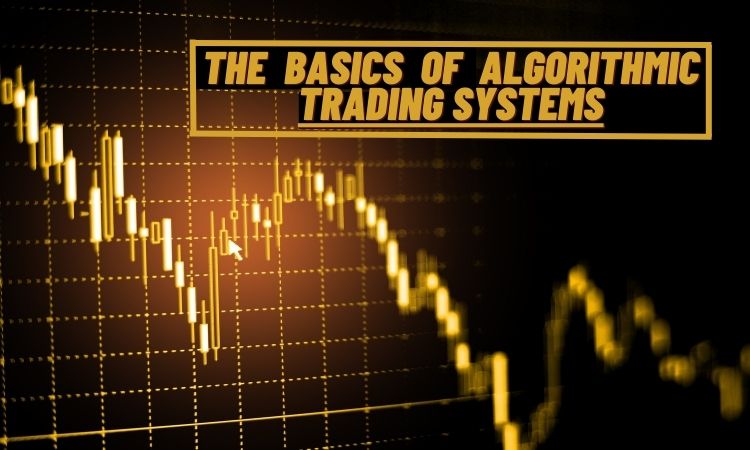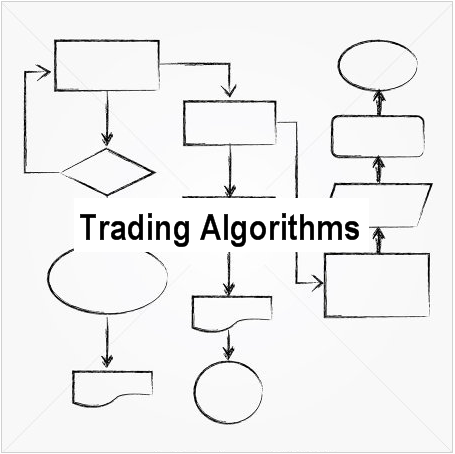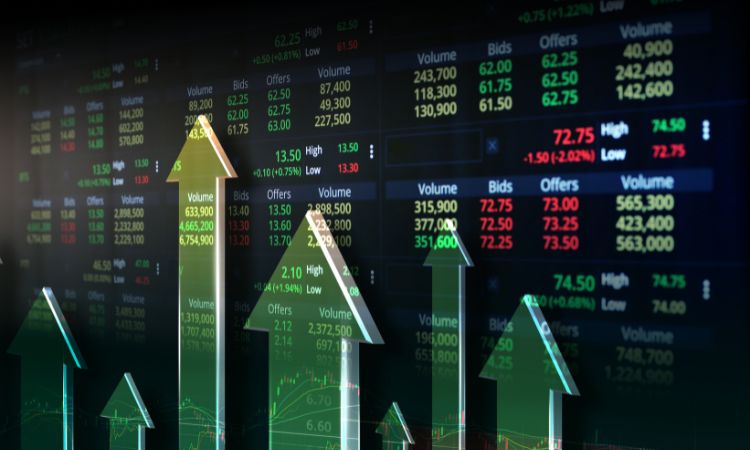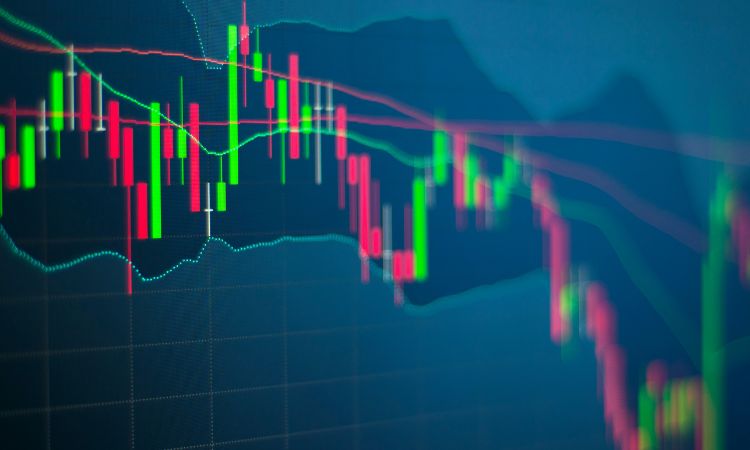Basics of Algorithmic Trading Systems- Explained For Beginners

Algorithmic trading is a method of executing a large order (or multiple orders) using computer-controlled pre-programmed trading instructions accounting for factors like time, value, and quantity.
This method was created to minimize the impact of human sentiments and desires, which can lead them to make poor trading judgments. Traders can receive up-to-the-minute buy and sell signals based on specific criteria, which can be automatically implemented due to algorithms.
In recent years, algorithmic trading has gained popularity as a method for making stock market trades. Large investors and financial institutions utilize this method to make rapid, high-volume trades since it relies on complex computer algorithms to perform transactions.
However, the algorithmic trading process can take time and effort to understand due to the complex rules and regulations controlling the stock market.
This article will discuss the basics of algorithmic trading and explain several techniques you may apply to increase your profits.
Algorithmic trading utilizes various methods, including statistical arbitrage, market creation, and trading on news events. Let’s discuss basics of algorithmic trading!
Trading Algorithms History
Trading algorithmic can be traced back to the earliest days of algorithmic trading. In its simplest form, algorithmic trading is the automated use of computer systems to make trading choices.
The modern practice of algorithmic trading is a very complex endeavor that uses state-of-the-art technology and statistical models to make more educated trades than human traders could ever do.
Algorithmic trading has been around since the introduction of programmable trading terminals in the 1970s. Automated order entry using these terminals marked a significant break from the previous open appeal system that had previously dominated futures markets.
In the wake of the 1987 stock market crash known as “Black Monday,” algorithmic trading emerged as a viable trading strategy. Some exchanges have responded to concerns about the widespread use of algorithmic trading by passing legislation limiting its effects.
Algorithmic trading has persevered despite these early failures, increasing in popularity and expertise over the years.
Hedge funds, institutional investors, and retail investors use algorithms today to trade various financial products across many investment vehicles and marketplaces. There will be a continued increase in the use of trading algorithms software in the coming years.
Related: TRADER TIP – WHAT IS THE BEST TIME TO TRADE THIS WEEK?
Types of Algorithmic Trading
Algorithmic trading comes in many forms, each with its advantages and disadvantages. Basics of algorithmic trading is various models and strategies like High-frequency trading (HFT), statistical arbitrage (Stat Arb), index arbitrage, and market making.
Let’s discuss one by one!
High-frequency trading (HFT)
The term “algorithmic trading” refers to trading methods that are automated by computer systems. High-frequency trading (HFT) is an algorithmic trading strategy that targets minor price differences created when large orders are filled.
High-frequency trading (HFT) has the potential to yield huge profit but also significant disadvantages. Increased slippage is a risk associated with HFT because it requires placing numerous large orders in a short time frame.
High-Frequency Trading’s (HFT) potential high cost of entry is a major drawback. To make a profit off of such minute price changes, HFT firms need to trade massive volumes of securities.
Smaller businesses may have a hard time raising the necessary funds to do this. Moreover, because to the time-sensitive nature of HFT, any lags in execution can have serious consequences.
Statistical Arbitrage
Another algorithmic trading example is statistical arbitrage. The goal of statistical arbitrage, as a trading strategy, is to make a profit off of market inefficiencies in pricing. Utilizing mathematical models and algorithms, this trading style can be applied to the stock, bond, agricultural, and currency markets, among others.
Statistical arbitrage has the potential to aid traders in capitalizing on minute price differences that would otherwise be impossible to exploit profitably. Trading in this manner can also be highly automated to save expenses and increase earnings.
It’s important to remember that statistical arbitrage is not risk-free. A loss could occur if the trader needed access to reliable information or used an efficient model.
Also, changes in the market might affect this kind of trading, so keeping a careful eye on it and employing risk management measures are essential.
Market Making
Market makers generate quotes to create and fill orders on both sides of the market. The purpose of this action is to increase the market’s liquidity.
Market makers must ensure that there are enough buyers and sellers in the market to moderate any drastic swings in value.
Large banks and hedge funds with complex trading algorithms dominate the market maker’s role. Their restricted orders on both market sides are placed using these algorithms.
The bid-ask spread is how market makers generate revenue. In exchange for helping keep the market liquid, they receive rebates from exchanges. They may even take a cut of the action as payment for their assistance.
Index Arbitrage
The goal of index arbitrage trading is to make a profit from price differences between several indexes. Index arbitrageurs attempt to buy or sell the underlying stocks to profit from price disparities in indices, which typically consist of a basket of securities.
It is crucial to fully grasp the potential downsides of index arbitrage before attempting to trade. Keeping up with prices across many indices and spotting anomalies can be difficult.
Index arbitrage is time-consuming and costly because it requires buying and selling the underlying securities.
Despite these caveats, skilled traders who can keep an eye on the markets and anticipate price disparities might make money via index arbitrage.
Related: INVESTORS WITH POSITIVE SELF-TALK, PROPER EXPECTATIONS
Algorithmic Trading Strategies
Algorithmic trading is the practise of deploying a computer programme to make trading choices in order to profit from market failures.
A wide range of technical indicators and market analysis methods are incorporated into the development of these systems.
Here are some examples of basics of algorithmic trading strategies:
1. Trend following
There are many different approaches to algorithmic trading, but one of the most popular is a trend following.
This strategy requires investing in the direction of the general trend. You can use it for long and short trades.
This method is widely used in the foreex trading but applies to all markets. Since Forex trends may be durable and significant, so it can pay off to ride them out. However, there is a chance that you could lose money if you follow trends.
2. Mean reversion
This strategy aims to make money off the differences in price between several marketplaces or assets. It involves investing against the trend with the expectation of profit from a price reversal.
Mean reversion strategies can be divided between the trend-following or contrarian camp. Both trend-following and contrarian strategies, which trade against the present trend in the idea that prices would revert to the mean, rely on the idea that price movements will eventually converge on the average.
A market’s high liquidity and minimal volatility are ideal conditions for implementing a mean reversion strategy. Stocks with high historical volatility and a low beta are good candidates for mean reversion.
3. Arbitrage
When there is a temporary price gap between two marketplaces, there is a risk-free profit opportunity. Traders profit from this by acquiring goods at a discount in one market and selling them at a profit in another.
A wide variety of assets (stocks, commodities, currencies, etc.) can be used in arbitrage strategies. Traders can use various tools, including high-tech software, to automate the execution of arbitrage trades.
Earning money through arbitrage trading can be profitable but also risky. Traders need to be wary of getting trapped on the wrong side of a deal due to the fast and unpredictable nature of price changes.
4. Statistical Arbitrage
A trading method known as statistical arbitrage attempts to profit from statistically significant price differences between two or more stocks. This is a common strategy among hedge fund managers and other professional investors.
Two common applications of statistical arbitrage are pairs trading and relative value arbitrage. Pairs trading involves betting on the spread between two identical assets, whereas relative value arbitrage involves taking advantage of pricing differences between dissimilar securities.
Both approaches necessitate thorough research and an in-depth knowledge of the financial markets to be successful.
In addition, algorithmic traders frequently have an edge when employing these techniques due to their reliance on computer-based models.
Related: WHY TECHNICAL ANALYSIS IS CRITICAL FOR THE SUCCESS OF TRADERS AND INVESTORS
Tools and Technologies used in Algorithmic Trading
Algorithmic trading involves a variety of different techniques and resources, most of which belong into one of three categories:
Automated trading options can be made by a method known as algorithmic trading, which utilizes computer algorithms. Computer algorithms are the basics of modern automated trading software. These algorithms have Rules that consider price, volume, and time are used to guide the operation of these programs.
The most significant benefit of algorithmic trading is that it removes the factor of passion from the decision-making process. Traders can prevent common errors that lead to poor decision-making if they conform to a set of guidelines.
The data feeds, trading platforms and programming languages are the 3 main components that make up an algorithmic trading system.
1. Data Feeds
A data feed is a source of market data that is constantly being updated. It supplies the algorithms with the raw data they need to make judgments. There is a wide variety of data feeds accessible, each with its own set of features and price points.
2. Trading Platforms:
Trading platforms are software that allows users to carry out trading transactions. It has graphing tools, order entry forms, and order management systems as part of its repertoire.
One can choose from a wide variety of trading platforms, each of which varies in terms of its capabilities and price.
3. Programming Languages:
High-level programming languages, such as C++, Java, or Python, are often used for algorithmic trading rather than lower-level languages.
These languages make it possible to design complicated algorithms while maintaining a relatively delivery method.
4. Artificial Intelligence
Learning on Computers and Artificial Intelligence Machine learning and artificial intelligence are two areas of research that have recently attracted a lot of attention from the community of algorithmic traders. It is possible to take advantage of machine learning algorithms.
Benefits of algorithmic trading
Algorithmic trading is a type of trading in which trades are executed automatically by a computer system.
In recent years, this trading method has grown in popularity due to its ability to remove emotional responses from trading choices and execute trades at a faster rate than a human trader.
In this article, we will discuss some of the many benefits of algorithmic trading.
- It can help to remove emotional states from trading decisions.
- Algorithmic trading can execute trades quicker than a human trader.
- Backtesting of techniques is easier with algorithmic trading.
- Automating trade execution is one way to cut down on delays.
- Algorithmic trading can provide increased leverage in the marketplace.
Risks and Challenges
When engaging in algorithmic trading, it is essential to understand the potential problems and difficulties that may reoccur.
This form of trading is associated with some potential problems, including the following:
1. Latency and Execution Risks
The speed of algorithmic trading can be very rapid at times, and prompt decision-making is required. This can result in issues with the duration and execution of orders.
If an order is not executed properly, it has the potential to have a substantial impact on the market. In addition, key market moves can be skirted if orders are fulfilled promptly and sufficiently.
2. Market Impact and Liquidity Risks
The influence of algorithmic trading on the market is yet another risk associated with it. Large orders can affect the values of the underlying securities when they are traded.
This could result in liquidity issues and make it more difficult to close a position.
3. Concerns Relating to Law and Regulation
Trading with algorithms also introduces investors to potential legal and regulatory issues. There are limitations placed on applying algorithms in certain legal systems and jurisdictions.
In addition, the use of algorithms always leaves the door open to fraud or manipulation.
Conclusion
In conclusion, algorithmic trading is a strong tool that may be applied to trade in the financial markets. However, before using this tool, it is necessary to have a fundamental understanding of its operation.
The basics of algorithmic trading must be understood, such as the market microstructure, the different order types, and the execution algorithms.
In addition, it is essential to have a strong understanding of the various programming languages and platforms available to construct trading strategies.
You can learn more about the topic from algorithmic trading books such as algorithmic trading pdf. Or you may take some algorithmic trading course.
Check other services by Chris Vermeulen thetechnicaltrader.com, thegoldandoilguy.com & revesting.com



